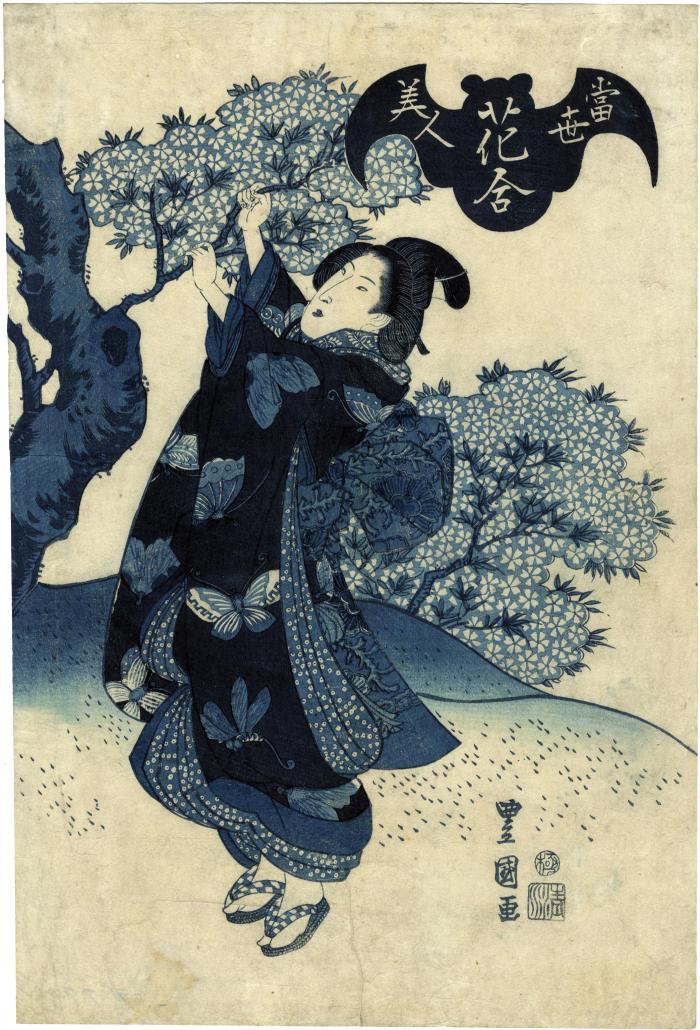Utagawa Toyokuni II (二代目歌川豊国) (artist 1777 – 1835)
Aizuri-e of a bijin reaching up to grab a branch of a flowering cherry tree, from the series Beauties of the Latest Fashion Compared with the Beauty of Flowers (Tōsei bijin hana-awase - 當世美人花合)
ca 1825 – 1829
10.25 in x 15.25 in (Overall dimensions) Japanese woodblock print
Signed: Toyokuni ga (豊国画)
Publisher: Shimizu (Marks U283 - seal 16-079)
Censor's seal: kiwame
Brooklyn Museum
National Gallery of Victoria
Art Gallery of New South Wales
Lyon Collection - another example from this series The title cartouche is prominently displayed near the top right of this print. It is in the form of a bat with its wings spread. The bat is interesting in that traditionally it often served as a symbol of happiness in east Asia - more so in China than in Japan, but not exclusively in China. Another curiosity is the use of butterflies on the woman's kimono. The butterfly is often used as a symbol of deceased souls. At the bottom of her robe is one dragonfly, a symbol of both Japan and more specifically the perseverance of the samurai.
The four examples from this series in the National Gallery of Victoria all focus on a different flowering group: the others are the plum, the bell flower and the chrysanthemum.
****
At Scholten Japanese Art they wrote: "There are three other prints from this series, also in the collection of The Brooklyn Museum of Art, comparing beauties to plum blossoms, cherry blossoms, and chrysanthemums. As no other designs from the series have been located, it is plausible that there were only four designs corresponding to the four seasons: the Brooklyn impressions would therefore relate to winter, spring and autumn, respectively. As such, this print should represent summer. Although the flower on this print, kikyo (bell flower or balloon flower), is included in the traditional Japanese grouping of Seven Flowers of Autumn (Aki-no Nanakusa), most begin blooming in the late summer."
blue prints (aizuri-e - 藍摺絵) (genre)
landscape prints (fūkeiga 風景画) (genre)
beautiful woman picture (bijin-ga - 美人画) (genre)
Shimizu (清水) (publisher)
bats (komori - 蝙蝠) (genre)
